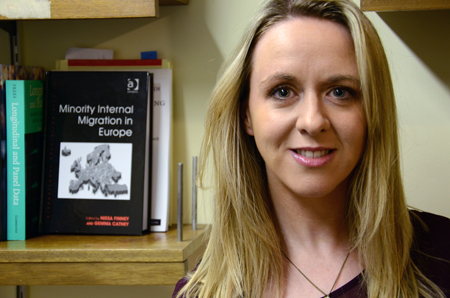Dr Gemma Catney is a Leverhulme Trust Early Career Research Fellow in the Department of Geography and Planning
A study of the 2011 Census by the University of Liverpool has found that the population of England and Wales is more diverse than ever yet is more integrated.
The study of the data found that the proportion of people who report themselves as being from an ethnic group other than `White’ has increased to 14 per cent, an increase of five percentage points since 2001.
Using a measure of segregation, the study showed that while ethnic minorities are growing, they are also becoming less geographically concentrated across England and Wales.
This wider geographical spread reflects movement of established immigrants, and subsequent UK-born generations, away from the areas where they have settled – `gateway’ areas’, and new immigrants settling in new destinations within England and Wales.
The data reveal continued growth in the number of households of mixed ethnic groups, with around 6.5 per cent of households of two or more persons living with a spouse or partner from a different ethnic group to their own.
Dr Gemma Catney, from the University’s ,Department of Geography and Planning said: “An analysis of 2011 Census data reveals that the population of England and Wales has become more diverse, and is also spread more evenly across the country.
“However, the increase in households with members of different ethnic groups reflects integration at the most personal level, even more profound than the increased geographical distribution. The rise in the number of households with members of different ethnic groups, through mixed ethnicity marriages and other partnerships, or between generations, reveals the intimate ways in which the population of England and Wales is diversifying and integrating.”
Since 2001 there has been an almost 50 per cent increase in people reporting themselves as being from a mixed or multiple ethnic group. This reflects an increase in mixed ethnicity partnerships and subsequent children. As well as indicating increasing integration in the population it might also reflect a greater confidence in expressing mixed ethnicity, which in itself is expressive of increased tolerance in society.
The study analysed data from the 2011 census which related to the England and Wales population within Local Authorities. The next release of 2011 Census data, due at the end of January, will provide further opportunity for a more in-depth study of these patterns at the local level.
Dr Catney’s research is funded by the Leverhulme Trust.
